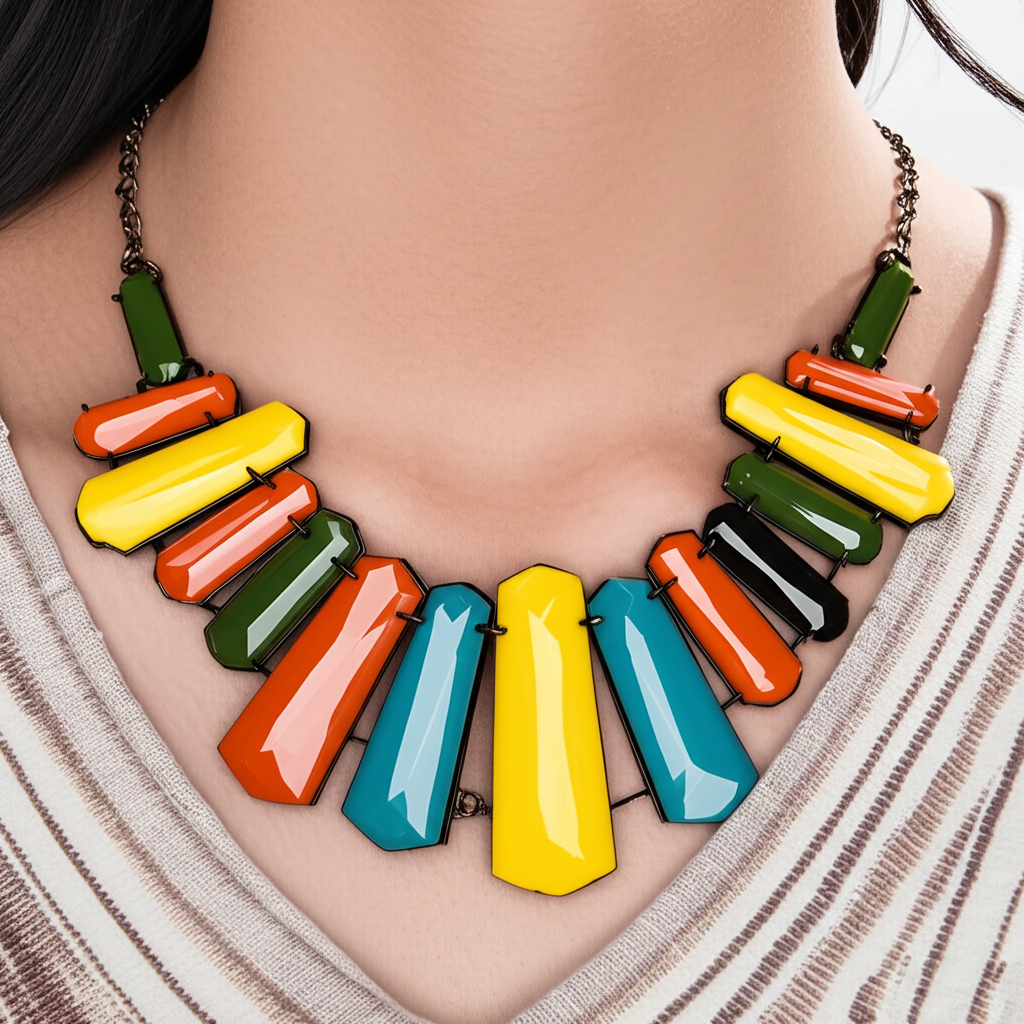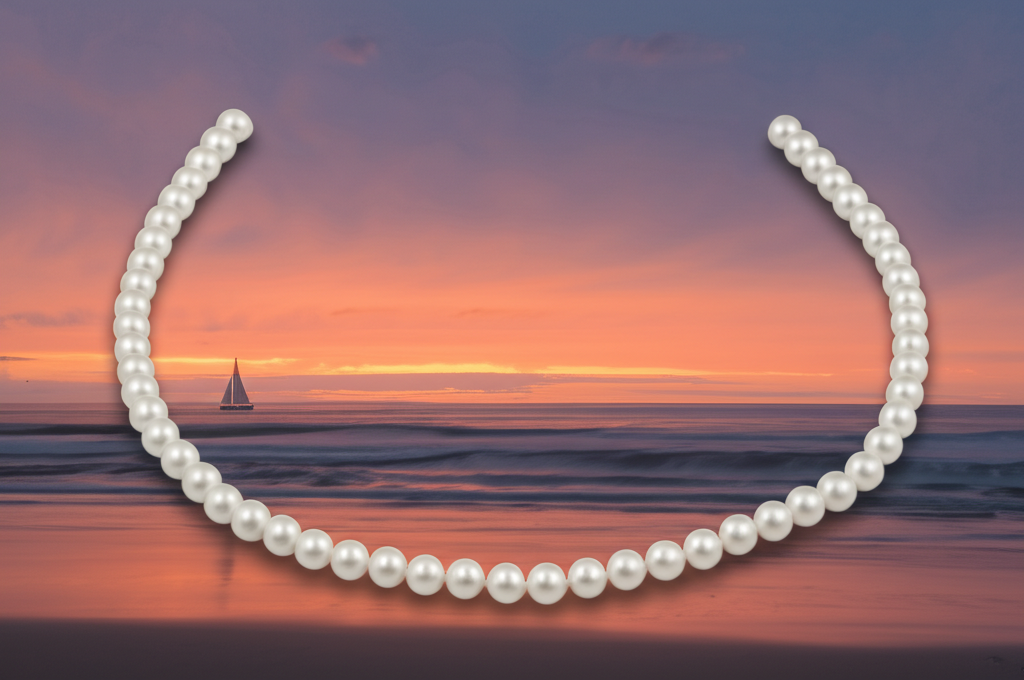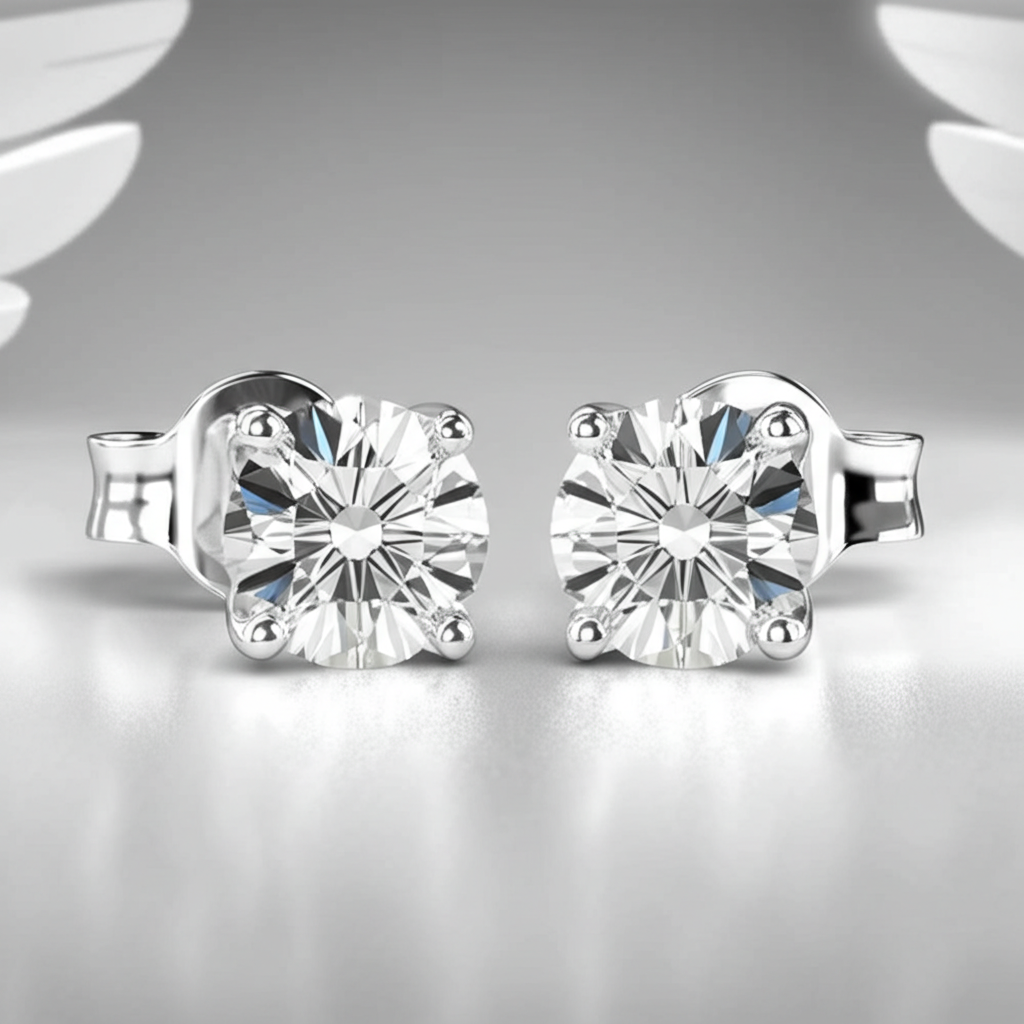Silver
The lustrous white metal with a rich history in jewelry and decorative arts.

The Timeless Appeal of Silver
Silver has been treasured for its lustrous beauty and workability since ancient times. As one of the first metals discovered and used by humans, silver has played a significant role in currency, tableware, jewelry, and decorative arts throughout history.
Its bright white color, high luster, and excellent reflectivity make silver uniquely beautiful among metals. While it's more abundant in the Earth's crust than gold, silver's beauty and versatility have ensured its status as a precious metal.
Today, silver remains a popular choice for jewelry, offering an elegant aesthetic at a more accessible price point than gold or platinum.
Properties of Silver
Chemical Symbol
Ag (from the Latin 'argentum', meaning 'shining')
Atomic Number
47
Melting Point
961.8°C (1,763.2°F)
Density
10.49 g/cm³
Malleability
Highly malleable; can be hammered into sheets as thin as 0.00025 mm
Ductility
Extremely ductile; can be drawn into wire finer than human hair
Reflectivity
Highest optical reflectivity of any metal (95% reflective when polished)
Conductivity
Best electrical and thermal conductor of all metals
Types of Silver

Sterling Silver
The most common silver alloy used in jewelry and silverware, sterling silver contains 92.5% silver and 7.5% other metals (usually copper). This composition provides a good balance between the beauty of pure silver and the durability needed for everyday use.
- Marked with '925' or 'sterling' to indicate 92.5% purity
- More durable than fine silver while maintaining excellent workability
- Will tarnish over time due to the copper content
- Used for a wide range of jewelry from everyday pieces to high-end designs
- The standard for silver jewelry in most Western countries

Fine Silver
Fine silver is 99.9% pure silver, making it softer and more lustrous than sterling silver. While beautiful, its softness limits its use in jewelry to pieces that won't receive much wear or stress.
- Marked with '999' to indicate 99.9% purity
- Bright white color with the highest luster
- Tarnishes more slowly than sterling silver
- Too soft for many jewelry applications, especially rings
- Often used in silver clay jewelry, Thai hill tribe silver, and some art jewelry

Argentium Silver
A modern, patented silver alloy that replaces some of the copper in sterling silver with germanium. This creates a more tarnish-resistant silver with several beneficial working properties for jewelers.
- Contains at least 92.5% silver, just like sterling
- Significantly more tarnish-resistant than traditional sterling
- Harder and more scratch-resistant than sterling silver
- Can be fused rather than soldered in some applications
- Environmentally friendly as it requires less cleaning chemicals
Coin Silver
Historically made from melted silver coins, coin silver contains 90% silver and 10% copper. It was commonly used for silverware and jewelry in America during the 18th and 19th centuries before sterling became the standard.
- Marked with '900' to indicate 90% purity
- Slightly more durable but less bright than sterling silver
- Historical significance in American silver items
- Less commonly used in modern jewelry
- Often found in antique pieces and some Native American jewelry
Silver Purity Standards
Pure silver (999 fine silver) is too soft for most practical applications, so it's typically alloyed with other metals, usually copper, to increase durability. Different standards exist around the world to indicate silver purity.
| Standard | Silver Content | Markings | Common Uses |
|---|---|---|---|
| Sterling Silver | 92.5% silver, 7.5% other metals (usually copper) | 925, Sterling, Ster, STG | Most jewelry, tableware, hollowware |
| Fine Silver | 99.9% silver | 999, Fine Silver | Silver bullion, some art jewelry, silver clay pieces |
| Coin Silver | 90% silver, 10% copper | 900, Coin | Historical American silverware, some Native American jewelry |
| Britannia Silver | 95.8% silver, 4.2% other metals | 958, Britannia | High-end British silverware, some premium jewelry |
| Mexican Silver | 95% silver, 5% copper | 950, Mexican Silver | Traditional Mexican jewelry and decorative items |
| Silver Plate | Thin layer of silver over base metal | EPNS (Electroplated Nickel Silver), Silver on Copper | Affordable silverware, costume jewelry |
Caring for Silver Jewelry
Preventing Tarnish
- Store silver in anti-tarnish bags or cloth.
- Keep silver away from rubber, latex, and certain plastics.
- Remove silver jewelry before swimming, bathing, or using household chemicals.
- Wear your silver regularly—natural oils help prevent tarnish.
- Wipe silver with a soft cloth after wearing to remove oils and moisture.
Cleaning Tarnished Silver
- Use a silver polishing cloth for light tarnish.
- For moderate tarnish, use a commercial silver cleaner following product instructions.
- For a gentle home solution, line a bowl with aluminum foil, add hot water and baking soda (1 tablespoon per cup), and submerge silver items.
- For silver with gemstones, check if the stones can safely be exposed to cleaning solutions.
- Rinse thoroughly after cleaning and dry completely with a soft cloth.
Note: Avoid using toothpaste or abrasive cleaners, which can scratch silver.
Silver Throughout History
Ancient Civilizations (3000 BCE)
Silver mining began in Anatolia (modern Turkey). Ancient Egyptians, Mesopotamians, and Greeks valued silver for jewelry, religious objects, and as currency.
Roman Empire
Romans extensively mined silver throughout their empire. The denarius silver coin became the standard currency, and silver tableware signified wealth and status.
Middle Ages
Silver mining expanded in Central Europe. Guilds established standards for silversmithing, and hallmarking systems began to ensure quality and purity.
Colonial Americas
Spanish conquistadors discovered vast silver deposits in Mexico and Peru. The influx of New World silver dramatically affected global economies and trade patterns.
Victorian Era
Silver became more accessible to the middle class. Elaborate silver tableware, decorative objects, and jewelry flourished, with intricate designs and patterns.
Arts & Crafts Movement
Reaction against industrial production led to handcrafted silver pieces with simpler designs emphasizing craftsmanship over ornamentation.
Art Nouveau & Art Deco
Silver jewelry featured flowing, nature-inspired forms in Art Nouveau, followed by geometric patterns and clean lines in Art Deco.
Modern & Contemporary
Silver jewelry ranges from traditional to avant-garde designs. Studio jewelry movement elevated silver as an artistic medium beyond its material value.
Silver Techniques and Treatments
Filigree
Delicate, intricate metalwork using thin silver wire twisted and soldered into complex patterns. This ancient technique creates lace-like designs and is particularly associated with Mediterranean and Indian jewelry traditions.
Repoussé and Chasing
Repoussé involves pushing the metal from the back to create a raised design, while chasing is working from the front to add detail. Together, these techniques create dimensional designs in silver sheet.
Granulation
Tiny spheres of silver are attached to a silver surface using heat and a special flux rather than solder. This ancient technique creates textured surfaces and intricate patterns.
Niello
A black mixture of copper, silver, and lead sulfides is inlaid into engraved designs on silver, creating a dramatic contrast between the black niello and the bright silver.
Oxidation
Silver is deliberately darkened (usually with liver of sulfur) to create contrast and highlight details. The raised areas are then polished to reveal the bright silver against the darkened recesses.
Mokume Gane
A Japanese metalworking technique that creates a wood-grain pattern by fusing layers of different colored metals (often silver combined with copper, gold, or other metals) and then manipulating the layers.